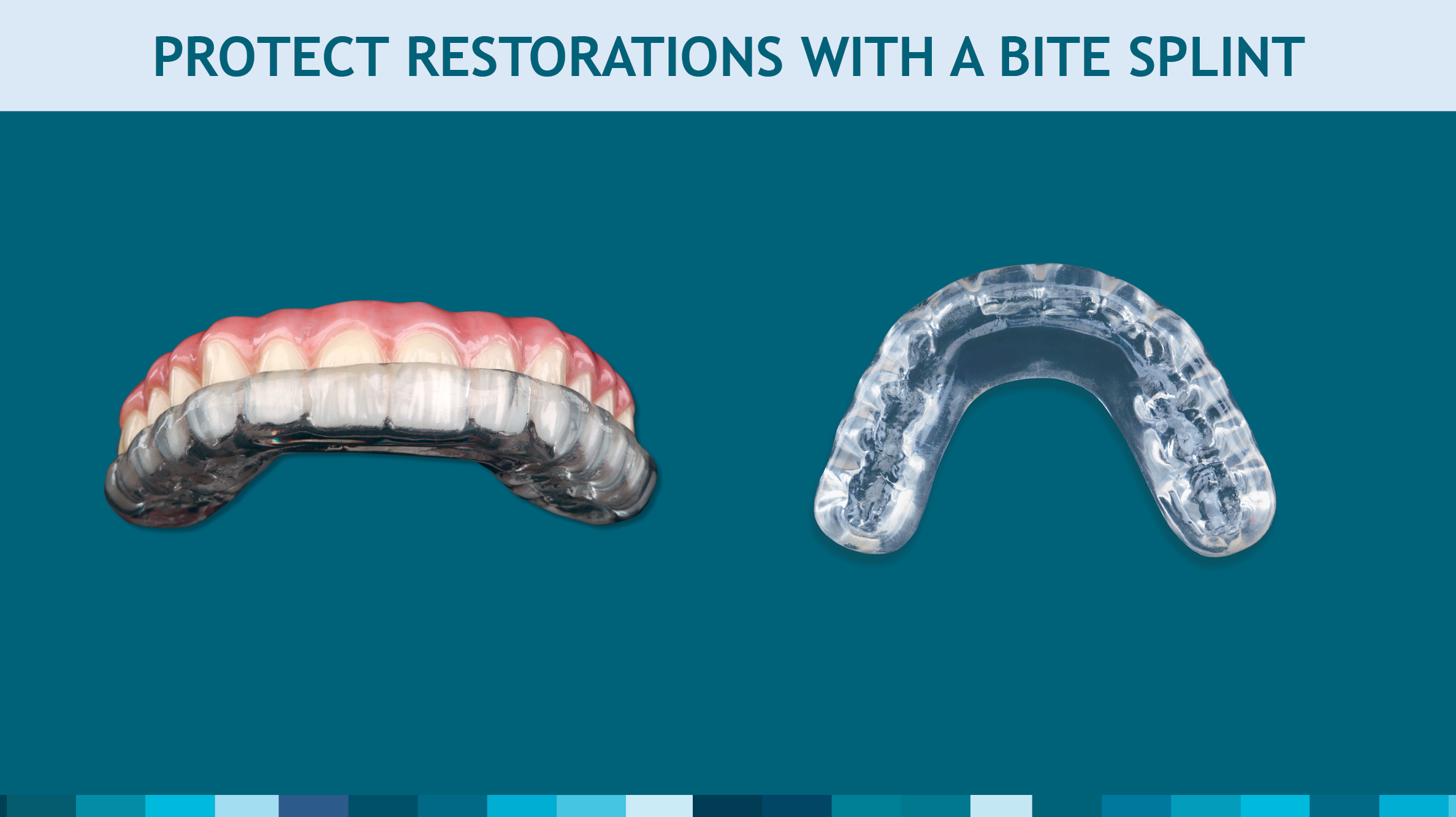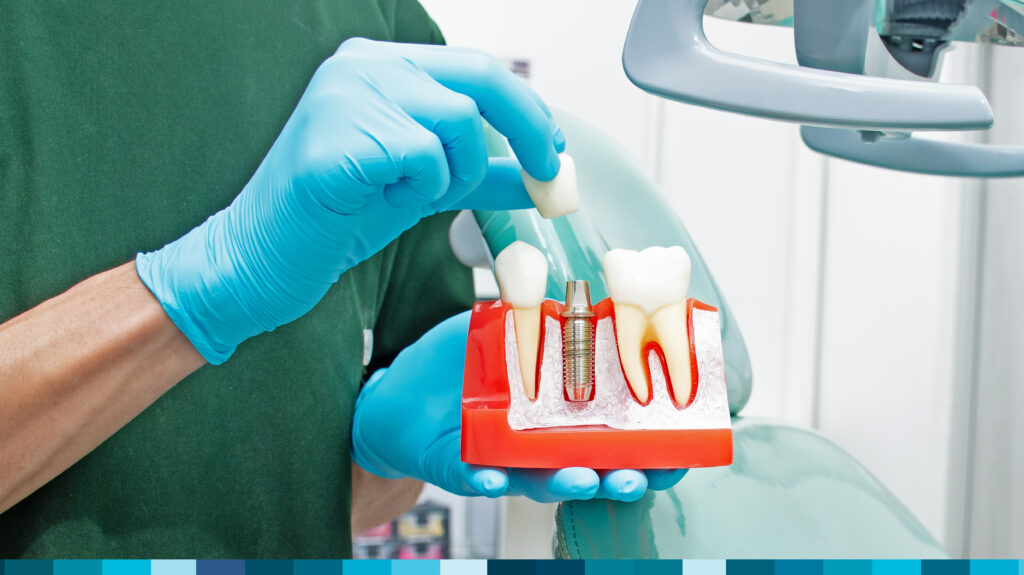Bite splints protect patients’ dentition and restorations
Many patients unconsciously brux their teeth while asleep. Despite not always being aware of the action, patients can over time present with worn dentition, popping of cusp tips, abfractions and gingival recession. Once a tooth or restoration is damaged, it needs to be addressed.
The goal of bite splints is to transfer those negative effects of bruxism from the patients’ dentition and restorations to the material in between. Bite splints prevent direct contact with opposing dentition, allowing for a protective barrier.
In the January 2001 edition of JADA, Dr. Gordon Christensen explains, “If a dentist merely watches patients as they wear their teeth down, they are practicing supervised neglect and contributing to continued tooth destruction.” This supervised neglect also applies to patients’ restorations. In many cases, patients pay hundreds to thousands of dollars for restorative work. When that restorative work is destroyed because of something completely preventable, patients tend to respond negatively.
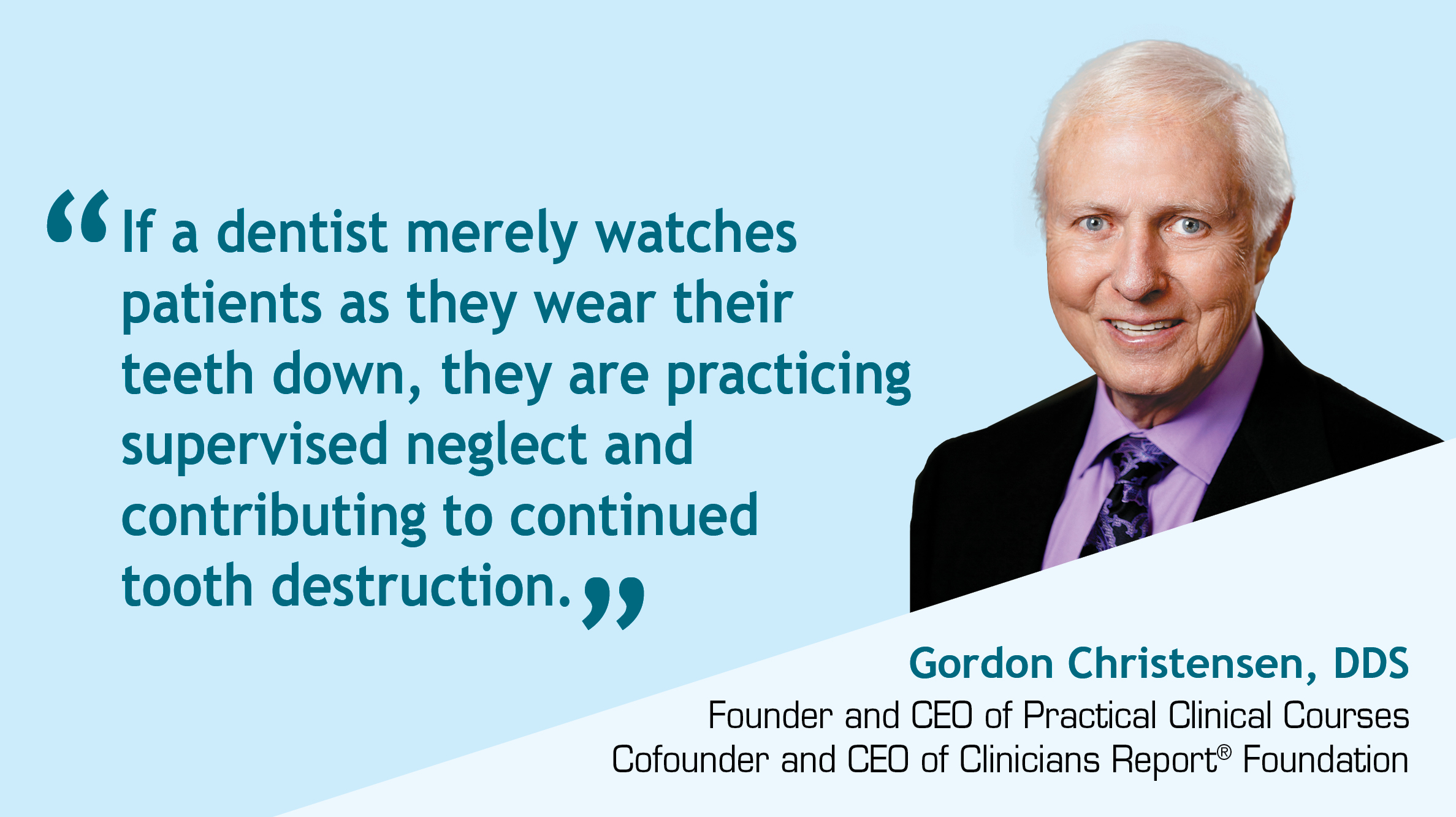
Below are some examples of restorative solutions that can be accompanied with a bite splint for sustained protection.
- BruxZir® Implant Prosthesis: The prosthesis serves as a zirconia, fixed implant solution for edentulous patients looking for a more durable and esthetic replacement for removable dentures.
- IPS e.max® veneers: These lithium disilicate veneers offer a high flexural strength with beautiful esthetics.
- Crowns & bridges: Despite their dependable performance, crowns & bridges are still susceptible to excessive jaw force and bruxing.
- Restorations over implants: Just like traditional crowns & bridges, restorations over implants need to be protected from the harmful effects of bruxism.
Educate yourself and your patients about the benefits of bite splints
Educating your patients about the benefits of a service you offer allows them to feel they are making a choice that will positively impact their dental health. Showing patients images of dentition and restorations that are completely worn down, chipped or damaged can provide them with a realistic reference for something they might not have thought about before.
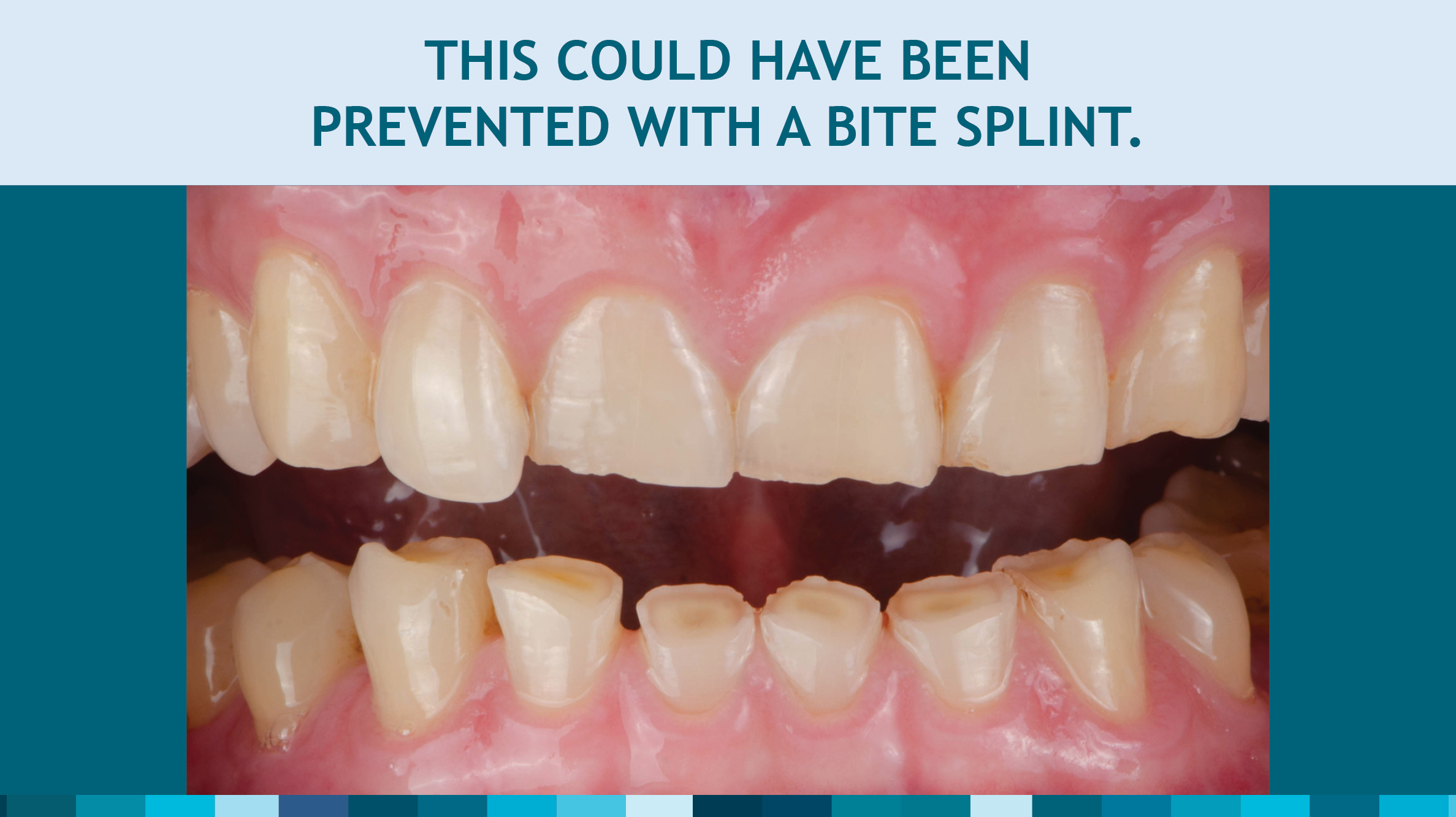
It’s possible that long-time patients might ask you, “Why do I need a bite splint now when you haven’t prescribed me one before?” Being transparent is vital. Inform your patient that you have been doing more in-depth research on the effects of bruxism, and you feel they now present a good case for becoming a bite splint patient.
Bite splints can increase practice revenue
Whether you’re doing veneers, crowns, full-mouth restorations, or bridges, bite splints can be used as a complementary treatment option. Sometimes, it helps for patients to think of bite splints as the extended warranty offer for a brand-new cell phone: Patients don’t have to get the warranty, but it serves as a preventive measure in case something were to go wrong.
Meanwhile, you also benefit from potential reorders. For heavy bruxers, a bite splint can wear down significantly in the span of a year. That means you can continue prescribing bite splints in regular intervals for most patients. In other words, this new service will not be just a one-time payment. Bite splints can be a lucrative solution to practices looking for a simple service to add to their offerings.
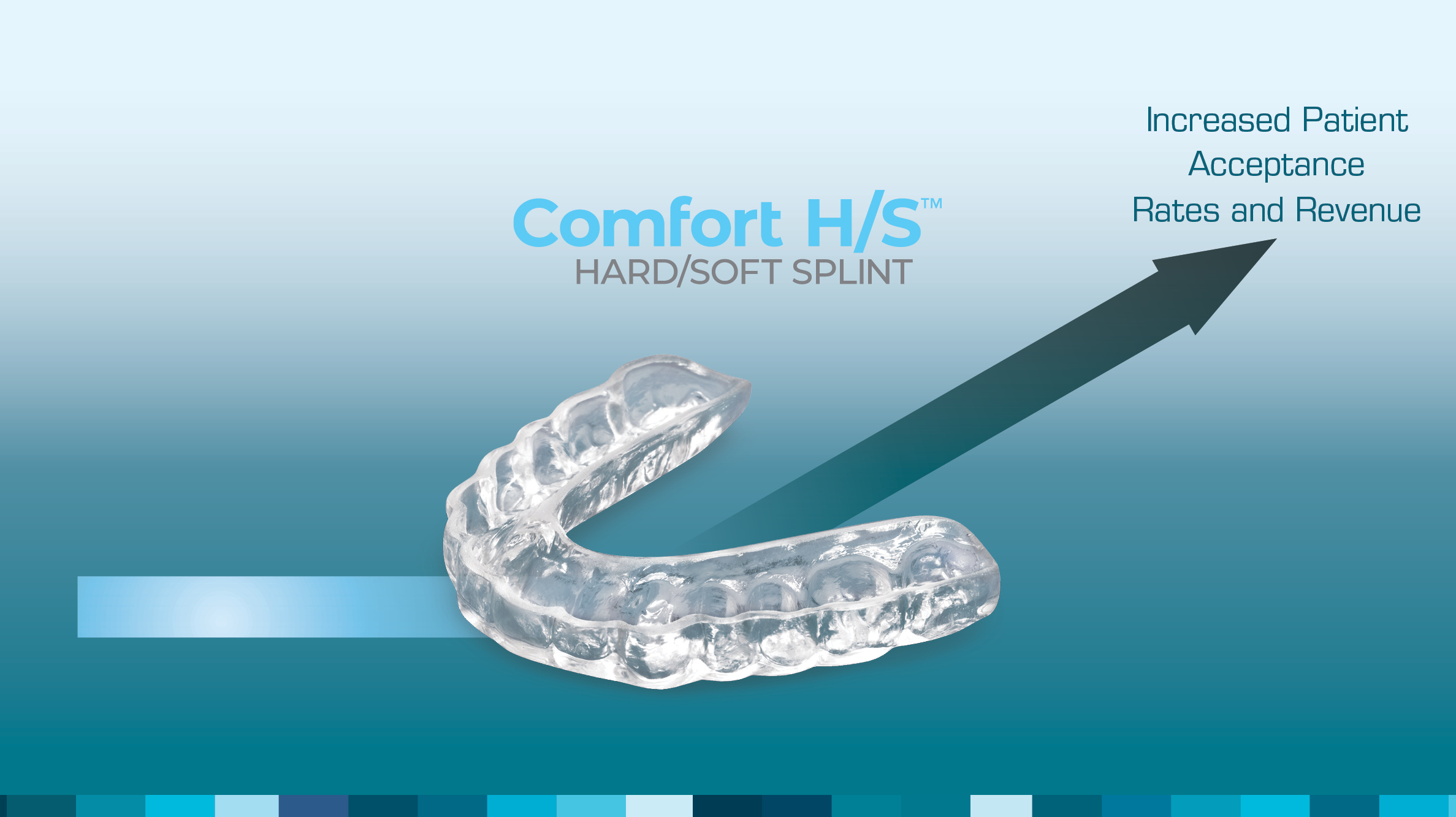
As a whole, patients keep coming back to dentists who demonstrate a clear interest in their overall dental health and dental investments. This also propagates a positive word of mouth, which encourages new patients to look into your practice.
The different types of bite splints
There are many different types of bite splints available to dentists, including ones that offer extra benefits in addition to protecting dentition and restorations.
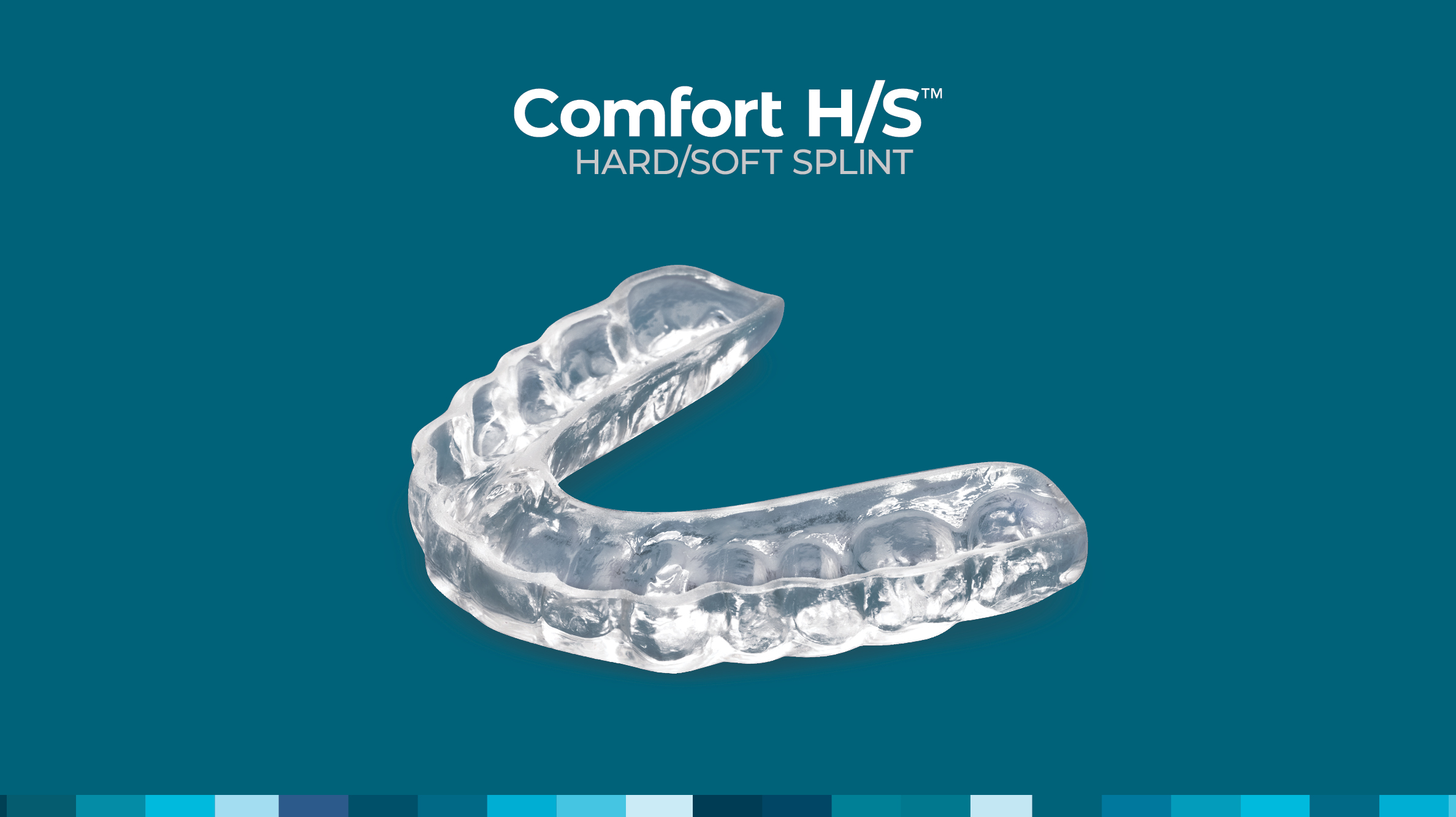
- Comfort H/S Bite Splint: This splint protects against the effects of bruxism with a 1 mm soft polyurethane inner layer and a 3 mm hard copolyester outer layer.
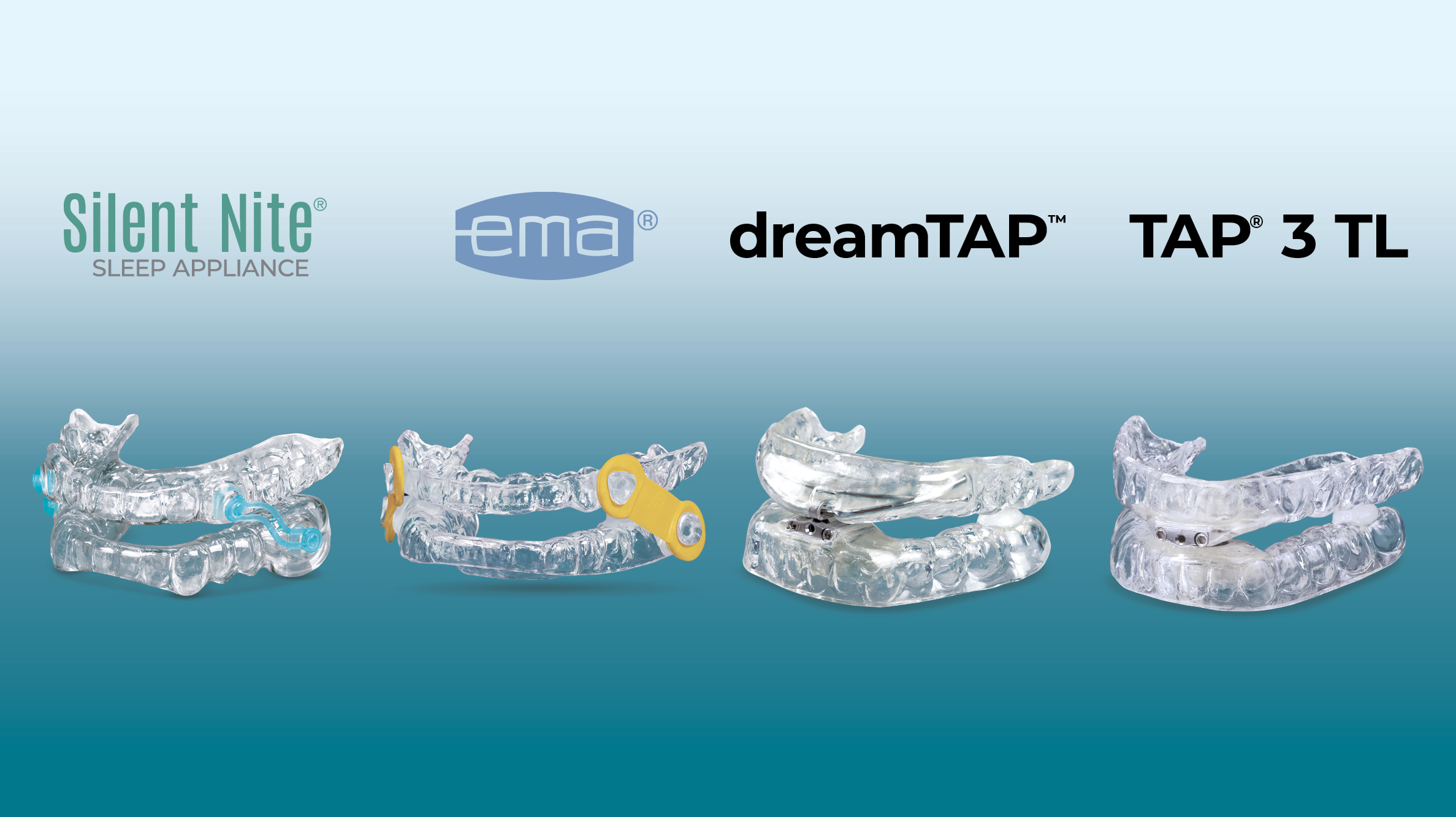
- Silent Nite® Sleep Appliance: This mandibular advancement device is thin, comfortable and flexible. It exhibits documented clinical success in mitigating or preventing the disruptive, unhealthy effects of snoring and mild to moderate sleep apnea.
- EMA® (Elastic Mandibular Advancement): This device was created for the noninvasive treatment of snoring and obstructive sleep apnea (OSA). It advances the mandible and opens the bite to allow for less restricted airflow.
- dreamTAP™: The dreamTAP appliance reduces sleep apnea-associated health risks without the need for surgery or medications. The appliance holds the lower jaw in a forward position, maintaining a clear airway to reduce snoring and improve breathing.
- TAP® 3 TL: This appliance helps provide room for the patient’s tongue and allows the lips to close. An adjustment key enables the patient to adjust the protrusion of the lower jaw.
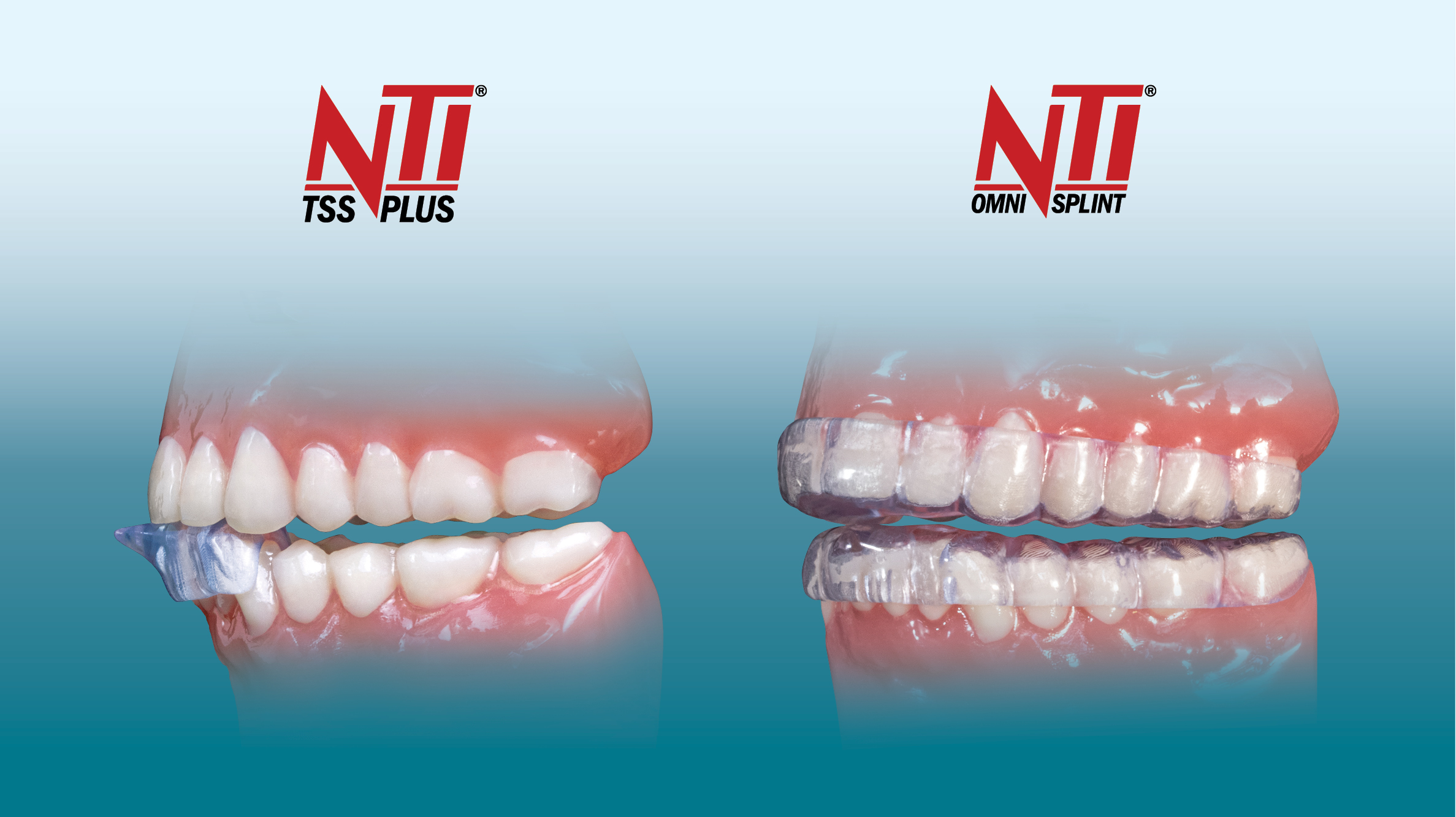
- NTI-tss Plus®: The NTI-tss Plus (Nociceptive Trigeminal Inhibition Tension Suppression System) is an anterior disclusion device proven effective at preventing tension-type headaches and migraines by keeping the posteriors and canines out of occlusion.
- NTI OmniSplint®: This device minimizes clenching and bruxing intensity through a full-arch design. By covering both arches, the NTI OmniSplint provides patients with a comfortable solution for their migraines or tension headaches.
Conclusion
Adding bite splint services to your practice, especially as a complementary service to restorative solutions, yields positive results for dentists and their patients. To get started today, visit newwestlab.com/all-services/services-bite-splints.
More to Know
- Bradley Eli, DDS, M.S.: “Which Splint Should You Prescribe for Patients Who Clench?”
- Mark Collins, DDS: “3 Steps to Grow a Small-town Practice with Sleep Therapy”
All trademarks are property of their respective owners.

